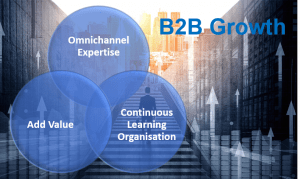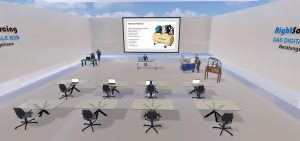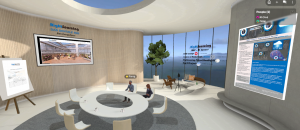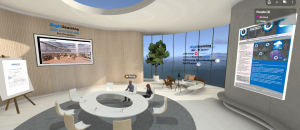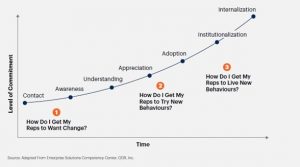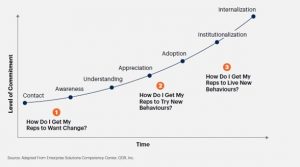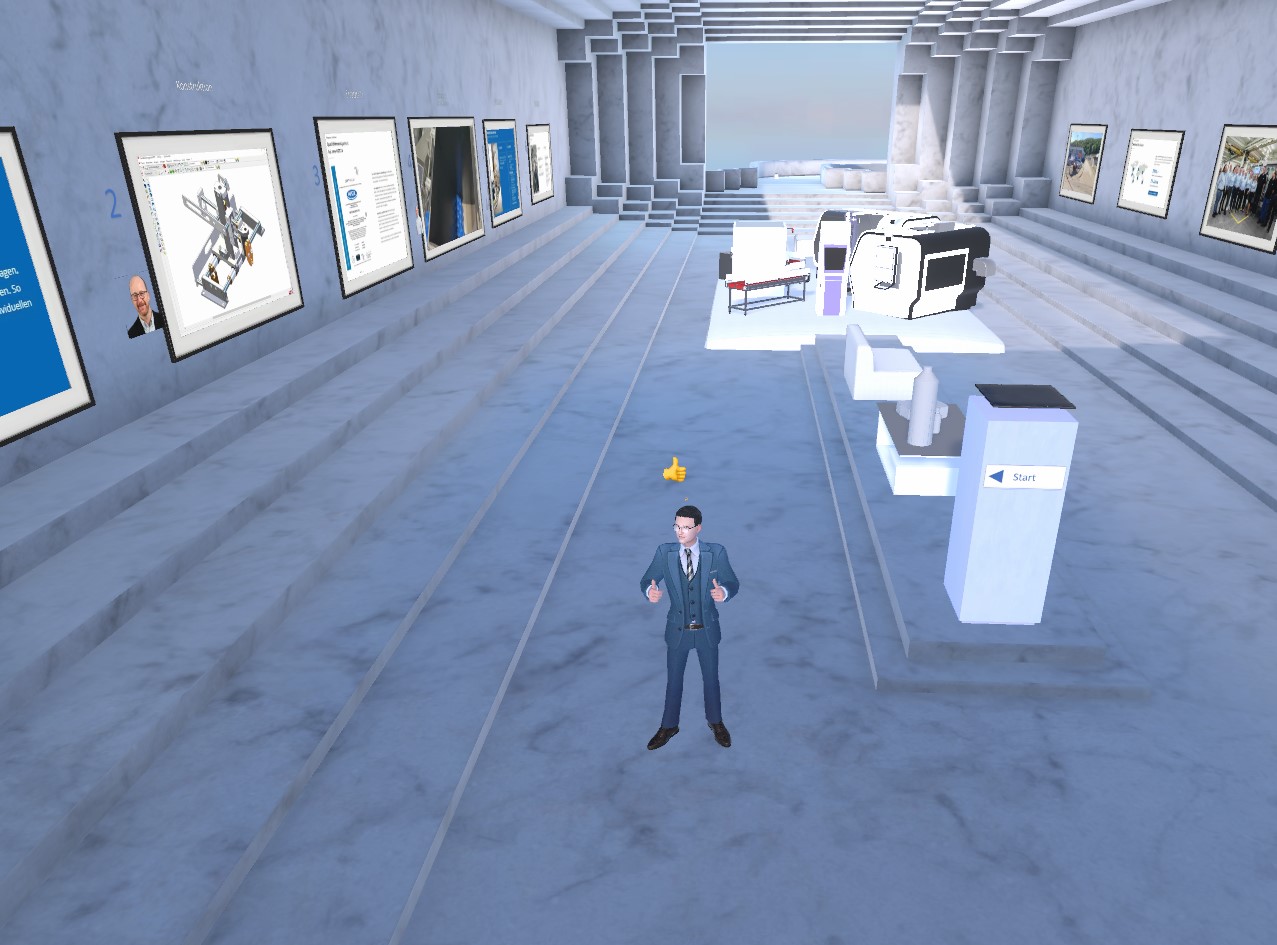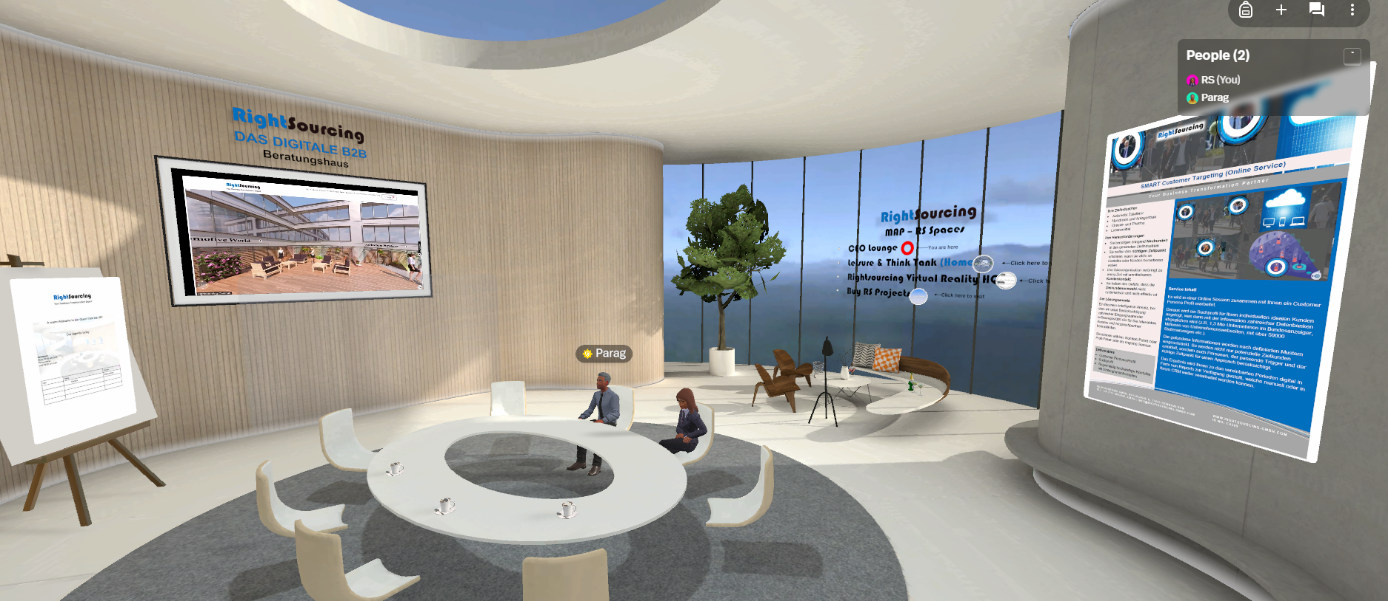B2B sales growth in the VUCA world – Omnichannel
If you look at the last few years, it seems like change is the only constant in business – how do players in the B2B environment ensure sales growth and what are the future successful sales approaches? This article tries to answer this question.
– A contribution by Prof. Dr. Markus Hesse and Suchi Shinde, April 2022
Let’s analyze the phase of the COVID pandemic. Pandemic-related restrictions did not cause successful B2B companies to turn to e-commerce or abruptly return to the previous sales model (e.g., field sales). Rather, the successful B2B providers have used the pandemic and have implemented a hybrid sales approach consisting of a successful mix of channels that their customers have wanted for a long time.
Recent research (Figure 1) shows that B2B customers (buyers) have a balanced mix of
• Traditional (e.g. personal)
• Remote (e.g. video conference or telephone) and
• Self-service interactions (e.g. e-commerce)
as the model of choice throughout the buying journey. 1 In 2021, two-thirds of the Buyers preferred remote human interactions or digital self-service. McKinsey has developed an integrated sales approach based on these findings, which they call the Virtual Sales Machine.

Source: McKinsey & Company Global B2B Pulse, Aug 2020, n = 3,626; Feb 2021, n = 3,496; Dec 2021, n = 3,360, countries: Brazil, Chile, China, France, Germany, India, Italy, Japan, South Korea, Spain, United Kingdom, United States
Figure 1: Current way of interacting with supplier’s Sales reps, by stage of the process
Gartner also expects that by 2025, 80% of B2B sales interactions between suppliers and buyers will take place through digital channels. Interestingly, all B2B buyers prefer an omnichannel approach, regardless of industry, country, size, or phase of the customer relationship.2
Omnichannel today and its history
A few decades ago, companies established different sales organizations to serve customers in specific market segments. For example, a key account management organization for particularly important customers, an area sales organization for regional customers, and a partner organization for small customers. It was assumed that the needs in each segment are identical or comparable and that the respective customer groups stick to the limits set by the provider and do their business with the contact persons assigned to them. This was what was called the Multi-channel approach.
In the course of internationalization and globalization, however, these boundaries are becoming increasingly blurred. Customers have started buying where they had the easiest access and where they could get the best deal. Customers are and were increasingly difficult to control at this point in time. This led to the development of the omnichannel approach, which gives a customer a uniform and price-consistent offer, no matter where he contacts the provider. Well-organized and digitized purchasing organizations were able to use inconsistencies in the supplier’s offer with significant advantages in the purchasing conditions.
COVID, in the year 2020 has once again accelerated this change worldwide. Providers who had already established an omnichannel approach with a digital eCommerce solution were the clear winners of this unforeseen situation.
The expectations of the customers with regard to the continuity and consistency of the offer at all existing contact points of a provider have changed, such that nowadays in an omnichannel approach each individual contact point is referred to as a channel.

Figure 2: Development of customer expectations with regard to the number of channels for communication.
Research has shown that customers’ expectations of interacting with the provider via multiple channels increased over the years from 2016 to 2021 (Figure 2). 72% of B2B companies that sell through seven or more channels increased their market share during the pandemic phase.
However, just offering an omnichannel is not enough. B2B buyers have precise expectations of an omnichannel approach. 78% of those surveyed expect a performance guarantee for a transaction in the form of a 100% reversal and full refund. At 74%, the second most frequent response was the visual presentation of the product or service provision in digital form (online). The ability to buy on all channels, the direct interaction with customer service, and a positive and consistent experience on all channels were the third most frequently mentioned with 72%.

Figure 3: Customer requirements for an omnichannel approach
In addition, there was the requirement that all the 5 “must-dos“ must be implemented simultaneously for a positive customer experience. Customers are also very quick to switch if these expectations are not met.
Another insight is that today’s buying teams can consist of up to 20 members, each drawing on information gleaned from a self-service buying experience. As a result, there is a high degree of diversity in how a purchasing organization approaches a contract. This renders one’s traditional engagement strategies ineffective.
Omnichannel in the future
Instead of meeting the omnichannel demands of their customers, the B2B organizations of the future need to be able to anticipate and plan sales opportunities in “real-time”. What are the enablers for this and how do they need to be deployed?

Figure 4: Enablers of a sales organization to anticipate sales opportunities in “real-time”.
1- Omnichannel expertise
An omnichannel organization must be able to work with different stakeholders (Buying centers) across multiple and simultaneous sales channels. It must be prepared for managing changing preferences in the business phases and in the customer relationship cycle. The organization of the future must be able to sell to customers anywhere the customer expects to connect, interact and do business with them!3
Delivering positive experiences through the right channels is becoming increasingly important. However, since different customer interest groups are involved in different phases of the purchasing process, the provider’s customer-facing employees need very specific and up-to-date information on each specific customer touchpoint. Finding and processing this information cannot be done by a traditional salesperson due to the variety, complexity, and dynamics. Therefore, Rightsourcing recommends defining a new role – that of a sales coach. These coaches have access to detailed data and leverage tools with AI analytics capabilities to determine which information and interactions are most effective in reaching specific audiences. There is a need to assess the touchpoint experiences of all stakeholders across the entire customer decision journey and to influence it in “real-time” to generate added value and a positive experience at every point (Figure 5).4

Figure 5: Interaction path between supplier and customer in an omnichannel organization (source Gartner 2021)
Such approaches are already available today. Rightsourcing offers intelligent services that provide information about which topics, which people, and at what point in time potential target companies are best to engage. We call this service SMART Customer Intelligence. Similar services are available for Competitor Monitoring (SMART competitor intelligence) and Lead Generation (SMART targeting).
2- Added value counts
Much will change in the future; the generation of added value will remain a constant. Concentrate on providing added value from the customer’s point of view. Added value is composed of content and functional benefits, emotional and psychological benefits, and economic benefits. Providers can differentiate themselves at every point of contact with the interest groups and thus create added value. But beware – every differentiation has its life cycle! I.e., what represents an added value compared to the competition today, can become only a parity point tomorrow.
Sales, within the omnichannel organization, must be developed with a consultative mindset – offering integrated solutions, creating customized value propositions, and developing individual pricing models. The necessary core competencies of the salespeople are solution sales and account planning over the entire customer relationship cycle.
3- Constantly learning organization
An omnichannel organization must have the ability to manage constant change. The increase in digital interactions will lead to greater interdependence of people, processes, and technology, which will make traditional sales models less reliable over time.
In order to stay in business and increase sales, the sales management must develop adaptable omnichannel organizations that constantly optimize digital interactions. Technologies such as data analytics, software robots, robotic process automation, and NLP are enablers for this. The training of an omnichannel organization must also be raised to another level. Learning is more successful when it is individualized and experience-oriented rather than broad-based. This ensures that members of an omnichannel organization can focus on specific skill gaps and apply what they learn to real-world customer interaction situations.
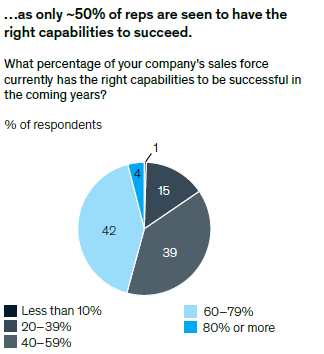
McKinsey’s research shows that most organizations need to reskill roughly half their sales force and plug key gaps in core commercial roles.3
Figure 6: Percentage of salespeople in a company with the right skills to be successful in the coming years (Source: Quelle McKinsey, January 2022)
Agile methods such as design thinking can help in concept development to achieve fast and targeted results.
Some successful companies follow the principle to Celebrate unlearning and relearning. Their view is that they cannot fully predict what the future will hold, so they must institutionalize practices that help build a learning culture—project postmortems, encourage dissent, celebrate shamelessly stealing, and reapplying.5
A clear message is that ‘Do not invest in development activities unless you see a clear commitment and a way to measure sustainable impact.’
Rightsourcing specializes in organizational development and employee education in the areas of sales and marketing in the context of automation and digitalization.
Figure 7: Rightsourcing Education Approach (excerpt) for a Continuous Learning Organization
Use our platform (https://rightsourcing-gmbh.com/en/) with numerous free self-assessment tools to find your individual starting point and your journey of digital transformation.
Sources:
- Arora, A., Harrison, L., Lun Plotkin, C., Magni, M., Stanley, J., B2B Pulse – Global Edition, The new B2B growth equation, McKinsey & Company, February 2022
Blum, K.: Future of Sales 2025: Why B2B Sales Needs a Digital-First Approach, Gartner, September 2020, <https://www.gartner.com/smarterwithgartner/future-of-sales-2025-why-b2b-sales-needs-a-digital-first-approach?utm_campaign=RM_GB_2022_SLSL_C_NT1_E1ALL&utm_medium=email&utm-_source=Eloqua&cm_mmc=Eloqua-_-Email-_-LM_RM_GB_2022_SLSL_C_NT1_E1ALL-_-0000 > (Zugriff am 20.4.22)
Harney, M., Ketola, L., Naik, K., Probst, N., Reis, S.: Building next-generation B2B sales capabilities, McKinsey & Company, January 2022
Anand, K., The Chief Sales Officer, Improve the Buyer Experience Through Multithreaded Engagements, Gartner, First Quarter 2022
Chandele, T., The Journey to become a Learning Organization, The Coca-Cola Company, <https://www.shrm.org/executive/resources/people-strategy-journal/fall2020/pages/feature-chandele.aspx > (Zugriff am 22.4.22)

